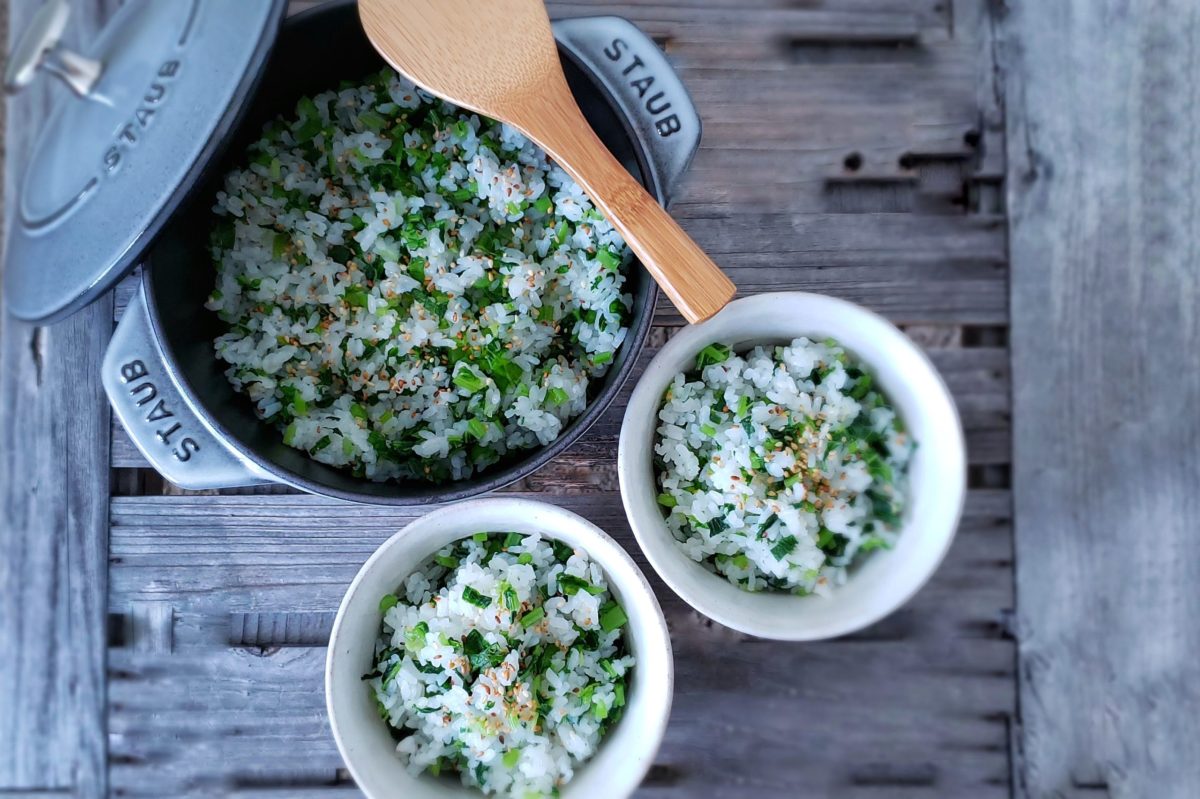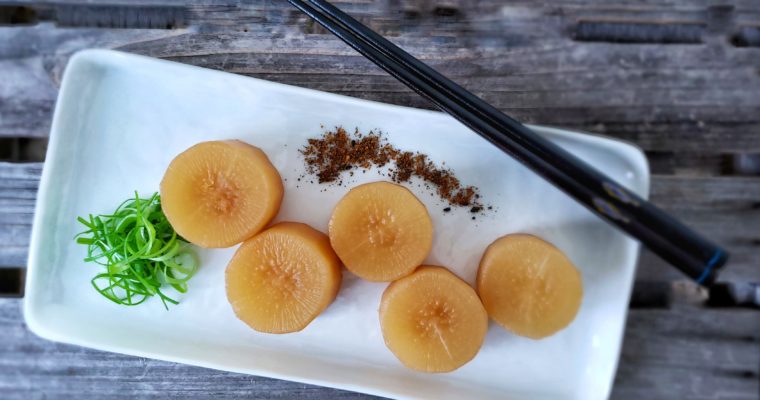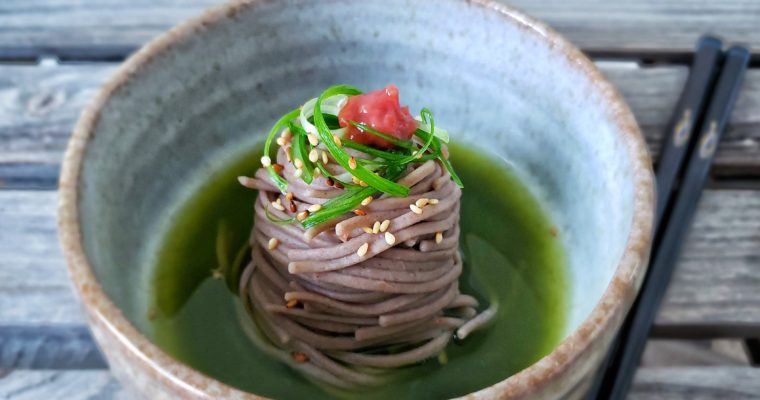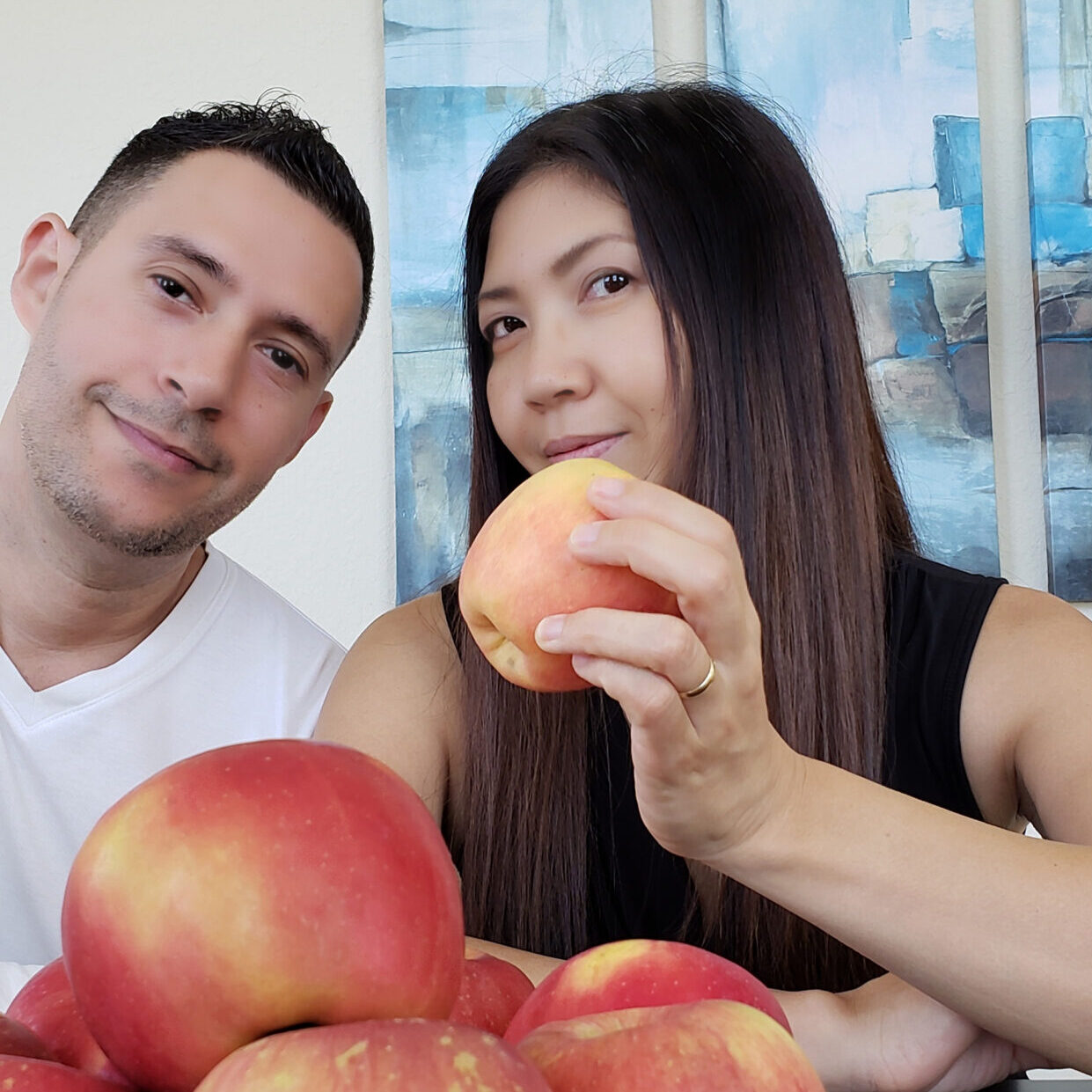Last Updated on July 8, 2021
Nameshi (Rice with Daikon Radish Leaves) is an authentic home-style Japanese dish. It’s simple, healthy, has a super clean taste. It’s another vegan and gluten-free dish that you can experience what the Japanese people eat at home!
Nameshi
As it’s shown on the title, Nameshi [菜飯]—(pronunciation: Nah-Meh-Shi) is Rice with Daikon Radish Leaves. You may know how much we love cooking with daikon radish for of course the taste but also for the low-waste cooking aspect. From the leafy part to the root including the skin, it’s all edible. If you aren’t familiar with it yet, now is the time to get yourself comfortable with this versatile Asian root veggie!
Now, nameshi basically is consisted with two components.
- Cooked Japanese Rice
- Cooked (Seasoned) Daikon Radish Leaves
Typically, the rice and the daikon radish leaves are cooked separately, then mix together at the end right before serving.
The Taste
For the rice, you can use either white rice or brown rice, or perhaps a mix of both. Although we know the benefits of eating whole grain diet, we’re white rice eaters, especially when it comes to Japanese rice. So, here again, we use white rice for this recipe as well but please feel free to switch to your favorite kind of rice. However, we must say, you really want to use Japanese short grain rice or any other starchy short grain rice for this dish. Using basmati rice or Jasmine rice just won’t taste the same because of the natural flavor profile of those rice.
For the daikon radish leaves, first make sure to clean with water to removed the sand very well (see the “notes” section in the recipe for how-to.) Then, blanch them before adding seasonings. Now, there are a couple of variations for the seasoning part to flavor the daikon leaves. In our recipe, we use;
- Salt
- Toasted Sesame Seeds
- Sugar
Yes, that’s it, we use only 3 ingredients. Other options are toasted sesame oil and/or soy sauce (not gluten free with soy sauce.) Just as a side note, when it’s not vegan, as typical Japanese cuisines aren’t, the daikon leaves are often times mixed with cooked baby anchovies.
A simple dish like this, we strive to keep ingredients as minimum as possible, so no toasted sesame oil and soy sauce this time! If you ask, yes, they are totally delicious to add if you decide to use them.
Rice Recommendation
Japanese rice is an essential staple in our kitchen. Most Japanese side dishes are meant to be eaten with the Japanese rice. For the flavor wise, it wouldn’t really make sense to eat with any other kind. As rice is a main dish for the Japanese, they are very particular about the flavor, texture, and aroma which is very neutral. In fact, you can find many Japanese don’t really like other rice like basmati rice and Jasmine rice as those kinds are too dry and too aromatic for them.
In case you don’t know, Japanese rice has varieties of crops coming from different regions. They all have the same things in common which are short grain, glossy and sticky (starchy) when cooked while the texture of cooked grains are slightly different from one another.
In the U.S, there are a couple of brands of short grain rice that you can find at grocery stores. It’s not like we’ve tried all but if you are looking for something that’s pretty close to authentic Japanese white rice, we can highly recommend “Tamaki Gold Rice.” In our opinion, this brand is by far the best for the flavor and texture. Unfortunately, it’s not organic but non-GMO project verified. You can find it on Amazon or many other Asian grocery stores!
Feeling Inspired?
Try other delicious vegan daikon radish recipes! All of them are delicious with Japanese rice!
Sweet & Savory Simmered Daikon Radish
Sweet & Savory Daikon Radish Leaves
Quick Sauteed Daikon Leaves & Peels
Nameshi (Rice with Daikon Radish Leaves)
Ingredients
Cooking Rice
- 2 cups uncooked white Japanese rice
- 2 cups + 2 tbsp water
Seasoned Daikon Radish Leaves
- 3 – 3 1/2 quarts water
- 1/2 tbsp salt to season water
- 10 oz daikon radish leaves and stems rinsed and cleaned (see the notes)
- 1/2 - 3/4 tsp salt
- 1 tbsp toasted sesame seeds
- A pinch of sugar
Instructions
- Prepare the rice. Place rice in a large bowl (or in a fine mesh colander over a large bowl.) At the sink, pour water in the bowl to cover the rice. Wash it with your hand moving in circular motion then discard water. Repeat the process until water becomes clear. Transfer to a fine mesh colander to drain. Set aside for 30 minutes.
- After the 30 minutes, transfer the rice into a medium size pot with a heavy lid. Add water and cover it with the lid. Cook over medium high heat. Once it starts boiling (bubbling), open the lid and stir gently from the bottom. Make the surface of rice leveled again and put the lid back on then reduce the heat to low. Simmer for about 15-20 minutes until water is completely absorbed. Turn off the heat and let it stand for 5-10 minutes (covered.)
- Meanwhile, start preparing seasoned daikon radish leaves. Boil water in a large pot. Once boiling, add 1/2 tbsp salt and daikon radish leaves and stems. Cook for 5-6 minutes until the stems are tender. Transfer them to an ice bath to shock them. Scoop them out and use hands to squeeze water out. Chop them finely and transfer to a small or medium prep bowl. Season with 1/2 - 3/4 tsp salt, toasted sesame seeds, and a pinch of sugar. Mix well and set aside.
- When the rice is done, mix with the seasoned daikon radish leaves and stems. Use a rice paddle to mix gently.
- Serve immediately.
Notes
- Make sure to use clean daikon radish leaves and stems. To remove sand, first cut the daikon radish leaves and stems off the daikon root. Soak them in water (it’s easier to do in the sink with water) and leave for a couple of minutes so remove sand settles to the bottom. Rinse them very well with running water and set aside. Discard the water and repeat the process as many times as necessary.
- It’s a very delicate (light) flavor dish. Feel free to ad more salt to taste.
- For more flavor, add a dash of toasted sesame oil in step 3 to season the cooked daikon leaves and stems.






